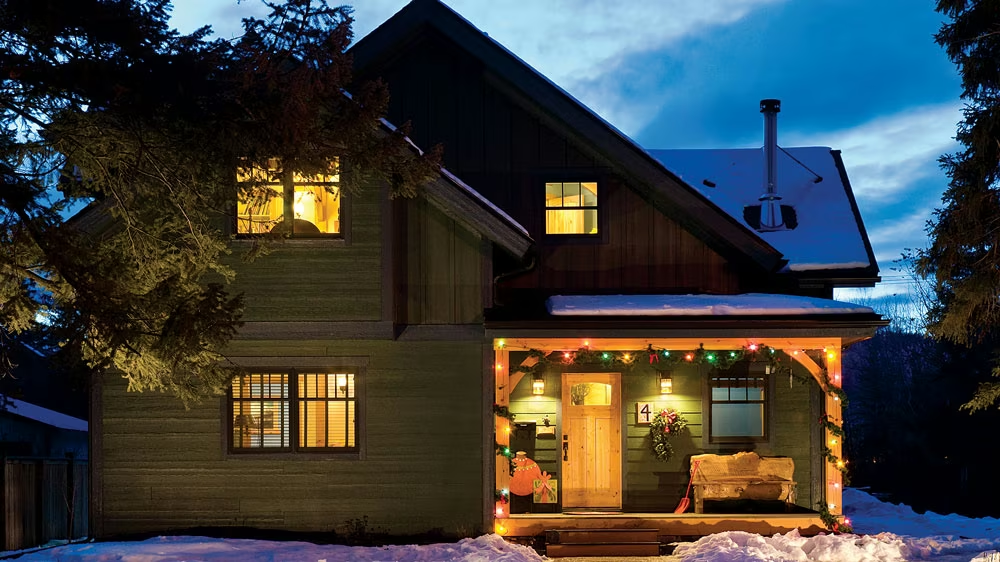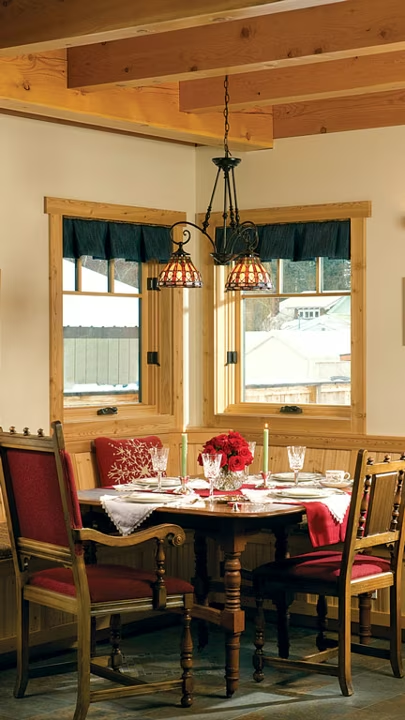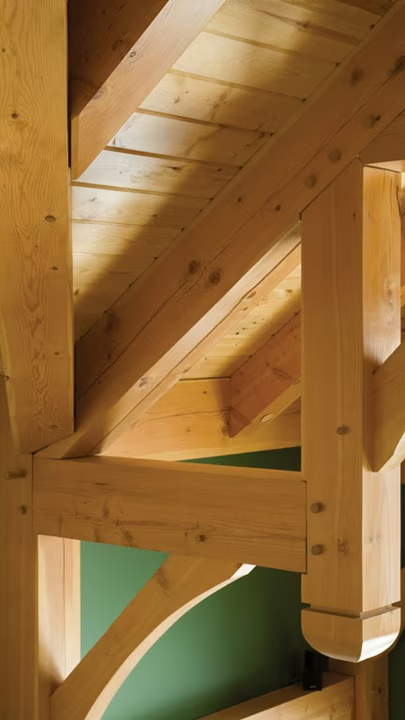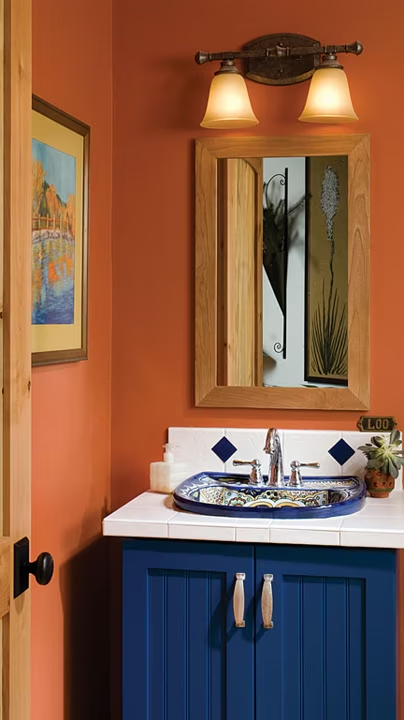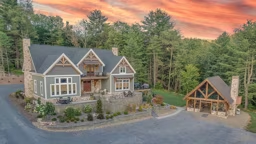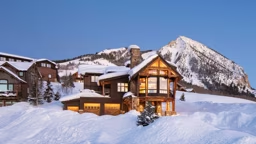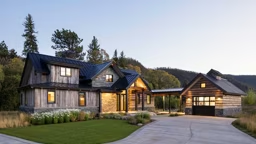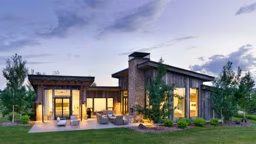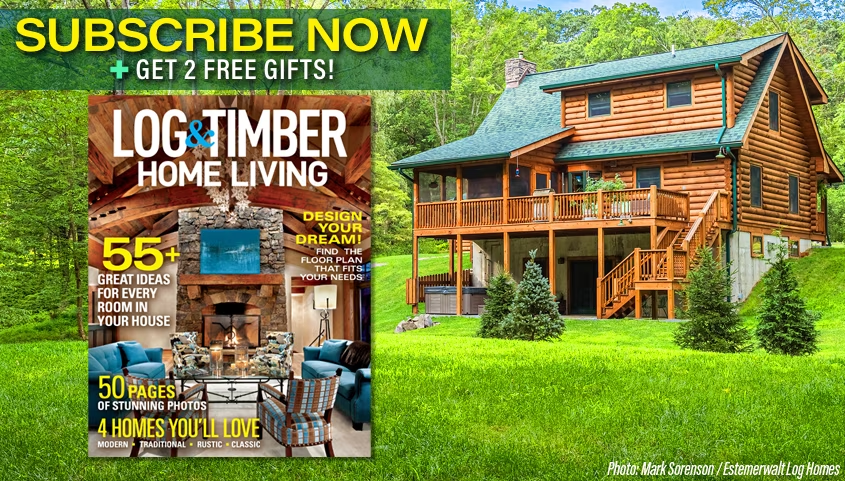A move from Colorado to northwestern Montana was more than merely an opportunity for Mark and Heidi Van Everen and their two children to take in a new environment. It also was a chance for these custom-home builders to experience firsthand some of the
design features they’d been advocating to others for years. The result was a 2,650-square-foot, four-bedroom hybrid timber-frame home that puts a premium on comfort and energy efficiency.
“For us, having built so many homes for other people, we were excited about having an opportunity to think about all the different things we’d done in other homes,
energy-efficiency features as well as design features,” Heidi says. “It was fun taking all those different pieces and making decisions for ourselves.”
Lots of Sweat Equity Meshed With Cut Timbers
Given their long background as builders, Mark and Heidi used their skill to do much of the work themselves. They teamed with a local architect and Canadian Timberframes Ltd. of Golden, British Columbia. While Mark completed the foundation and stockpiled stud walls, Canadian Timberframes cut and fitted the more than 300 individual frame pieces. By working from the same set of construction drawings, their efforts were slated to mesh precisely when the house went up. And other than a single timber that needed trimming, that’s what happened.
Before the frame arrived, Mark had built and stacked the stud walls that would complete the shell. In three days, the structure was up. “To see it all fit together like a glove was a great testament to Mark as well as Canadian Timberframes,” says Heidi. “You really can plan to (fit) things within one-eighth of an inch.” Mark farmed out the plumbing, electrical, drywall and painting, but he and Heidi did the rest.
Energy Efficiency and Hybrid Design are Key Features
The design incorporates timber-frame elements where they would have the most impact — in the great room and kitchen, for example — and conventional stick-framing elsewhere. This “
hybrid” approach lends the feel of a true timber frame at a lower cost. The house combines features the family found important and construction details that substantially reduce energy costs. That’s not surprising considering Mark’s background as a RESNET home rater, a specialist in energy efficiency.
Mark included more insulation than a typical house, including a foundation made with insulating concrete forms (R-24), 2x6 walls that combine blown-in fiberglass with rigid polyiso foam (R-28), a roof of structural insulated panels (R-42) and even 2 inches of rigid foam under the basement slab (R-10). As a result, the house is 60% more efficient than a house built to 2006 energy codes, what Mark would call a HERS rating of 40. They also invested in a high-efficiency heating system, a geothermal system with a ground-source heat pump that uses five 160-foot deep bore holes in the yard as the heat exchange.
Although the wells added $9,000 to
construction costs, Mark believes the system will pay for itself in roughly four years. And using vertical wells instead of ground-loops allowed the system to be installed on their relatively small in-town lot. “That was an opportunity we thought would work well with a tight, high-performance house,” Mark says. “Although it’s not particularly common in a city to use a geothermal system because of land restrictions and lot sizes, we were able to use bore holes.”
Writing Their Own Owner’s Manual
Because Mark and Heidi were seeking an EnergyValue Housing Award, a joint program of the
National Association of Home Builders, the U.S. Department of Energy and others, they were required to provide an owner’s manual for the house even though it was their own. The manual describes interior and exterior finishes, lighting, mechanical systems, and even includes the serial numbers of kitchen appliances and a maintenance schedule for everything from the dryer vent to gutters. Heidi and Mark like their new home, but they’re also reminded of the importance of where they’ve chosen to live. “It’s been a wonderful place to move to,” says Heidi, “and I can’t think of a better place for the kids to grow up in. It’s a vibrant community.”
Home Details
Square footage: 2,650
Architect: Kibo Group
Builder: Bridgewater Innovative BuildersTimber provider: Canadian Timberframes Ltd.






